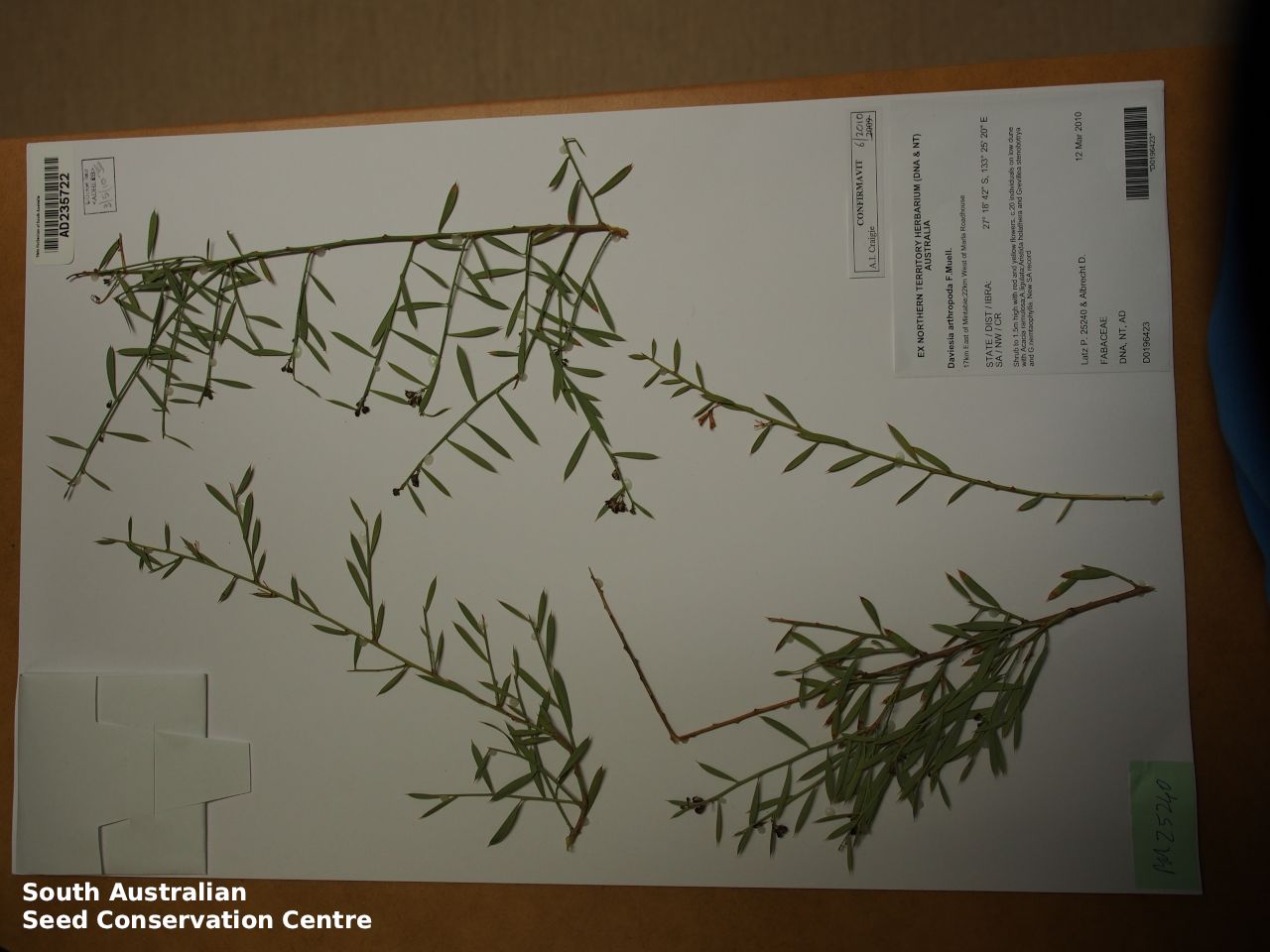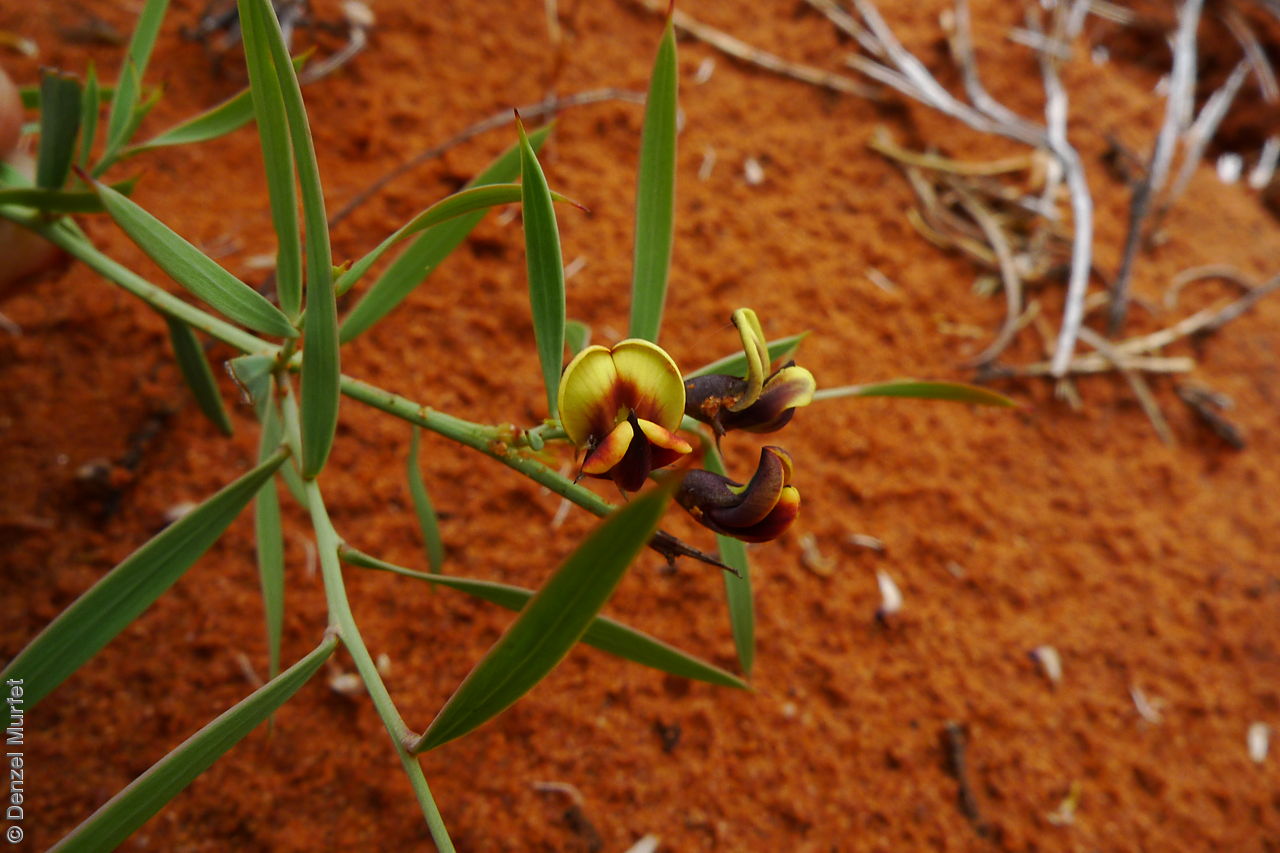



















Common names
Articulated Bitter-pea
Etymology
Daviesia named after the Rev. Hugh Davies (1739-1821), a Welsh botanist and an Anglican clergyman. Arthropoda from the Greek 'arthron' meaning joint and 'pous' meaning foot, referring to the phyllodes that are articulated at the branchlet.
Distribution and status
Found scattered in the western part of South Australia from the Nullarbor to the Northern Territory bounder, growing on sand dunes with spinifex. Also found in Western Australia, Northern Territory and Queensland. Native. Rare in South Australia. Rare in Western Australia and Queensland. Common in the Northern Territory.
Herbarium region: North Western
AVH map: SA distribution map (external link)
Plant description
Divaricated glabrous shrub to 1 m high, often with spiny branch tips and may form colonies by suckering. Phyllodes scattered, grey-green, narrowly elliptic to oblanceolate to lanceolate, pungent-tipped, glabrous or with hairs on the margins, 40 mm long and 5 mm wide. Inflorescence 1 or 2 clusters per axil with 2-4 yellow to red pea-flowers with a distinct calyx Flowering between April and August. Fruits are compressed, asymmetrically triangular pod to 8 mm long and 6 mm wide. Seed embryo type is bent.
Seed collection and propagation
Collect seeds between May and September. Collect maturing brown seed pods from the plant using secateurs or by hand. Leave the pods in a paper bag to dry for at least a week. Rub the pods gently with a rubber bung to dislodge the seeds. Use a sieve to separate the seeds from unwanted material. Store the dried fruit heads with a desiccant such as dried silica beads or dry rice, in an air tight container in a cool and dry place. This species has physical dormancy that needs to be overcome for the seed to germinate (e.g. nicking or softening the seed coat).